
This conversation with Anna Andrzhievskaia explores her artistic path, the themes of migration, loss, and memory, and the creative process behind her project Fundbüro Geist. Anna shares her thoughts on working with space, experimenting with materials, and using allegory as a narrative tool, while reflecting on the concept of ghostliness and her future aspirations.
Anna, how did your journey into art begin? Was there a particular moment or experience that made you realize it was your calling?
It felt like joining a youth subculture. My friends and I were 15 or 16 years old, reading Irving Stone’s Lust for Life, going to plein air painting sessions, and attending late-night screenings of arthouse films. My first solo exhibition was held in a tram, with help from my friend Anya Maramygina. Many of my closest friends became artists, and I still admire their work and follow their careers.
An exhibition in a tram is an unconventional approach! How do you work with space now?
After graduating from the Academy* I lost interest in painting and decided to focus on performance art. As part of the North-7 group, I participated in the Barents Spektakel Festival in Kirkenes, Norway. There we were given a site - an abandoned sailor's house that was due to be demolished the following year. Being on the Arctic Circle, I was inspired by local attractions like the famous ice hotel. I decided to create a hotel made of licorice candy and jam — a nod to Norway’s culinary traditions. To attach the candy to the walls, I melted sugar into caramel. It worked well for the walls, but when I tried to do the ceiling, the hot syrup dripped onto my hands. Despite the burns, the result was worth it.
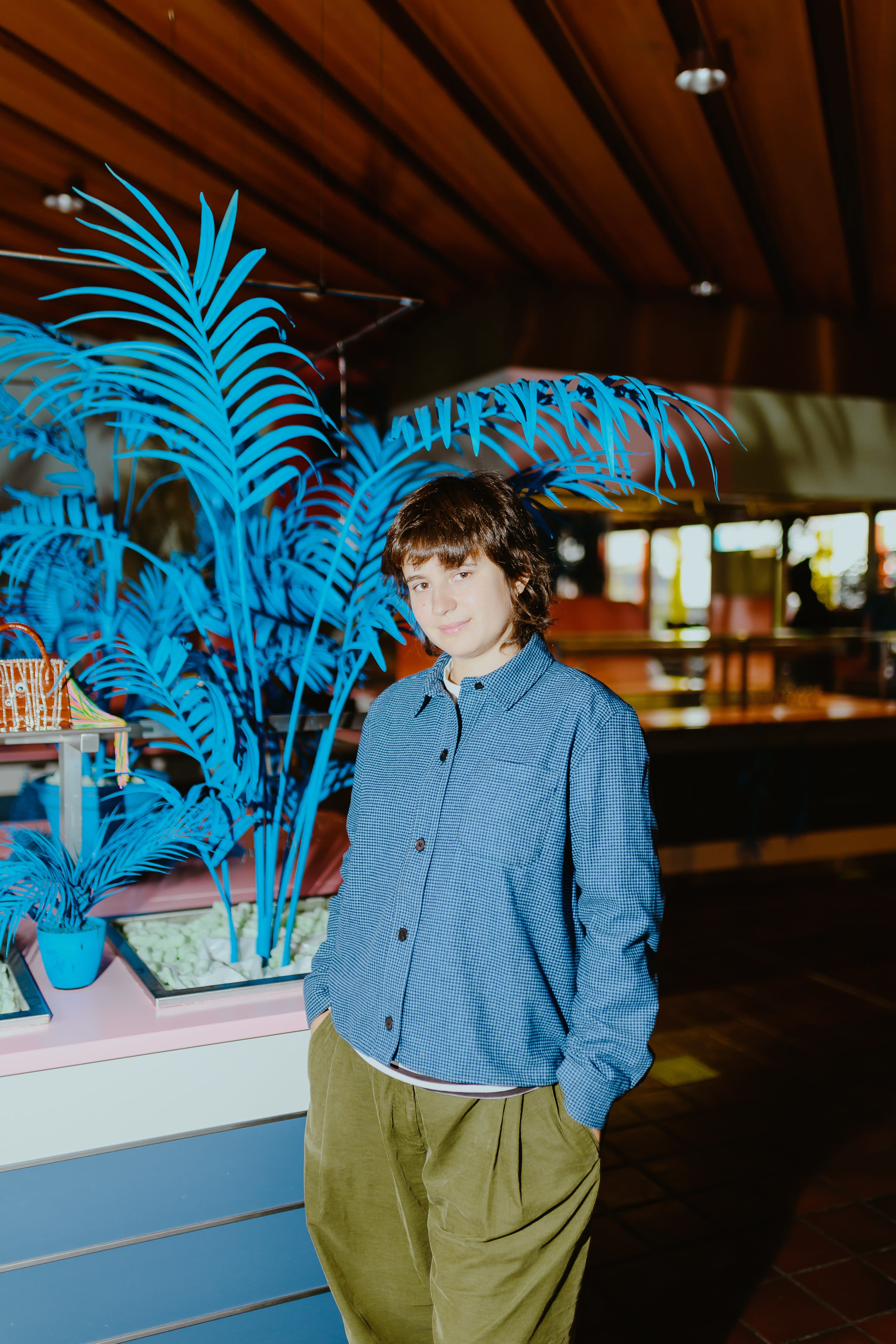
The past few years have been challenging for you: you left Russia and now live in Spain. How has this move influenced your artistic practice?
It may seem paradoxical, because last year was very productive from a formal point of view, but in my current life I have to constantly remind myself that I am an artist. The desire to communicate personal experiences, sometimes unpleasant ones — such as shame and fear — through art has become an important aspect. At the same time, Barcelona is one of the most welcoming cities I’ve lived in. Its atmosphere is incredibly supportive, and I’ve met amazing people who have become close friends.
For the past few years, I’ve been using visual art to express fleeting, ephemeral emotions that are hard to put into words. These emotions often contradict each other: mourning a lost life and simultaneously feeling curiosity for the new.
We’re delighted to present your project in the vitrines of the Voskhod Gallery. The title, Fundbüro Geist, has multiple meanings. How does it connect to themes of migration and loss? What does it symbolize for you?
The title translates from German as “Lost-and-Found Office Ghost.” Since the gallery window is next to a train station — a kind of portal where emigrants and travelers converge — it fits perfectly. Fundbüro Geist is a space where fragments of memories and lost mementos are rediscovered.
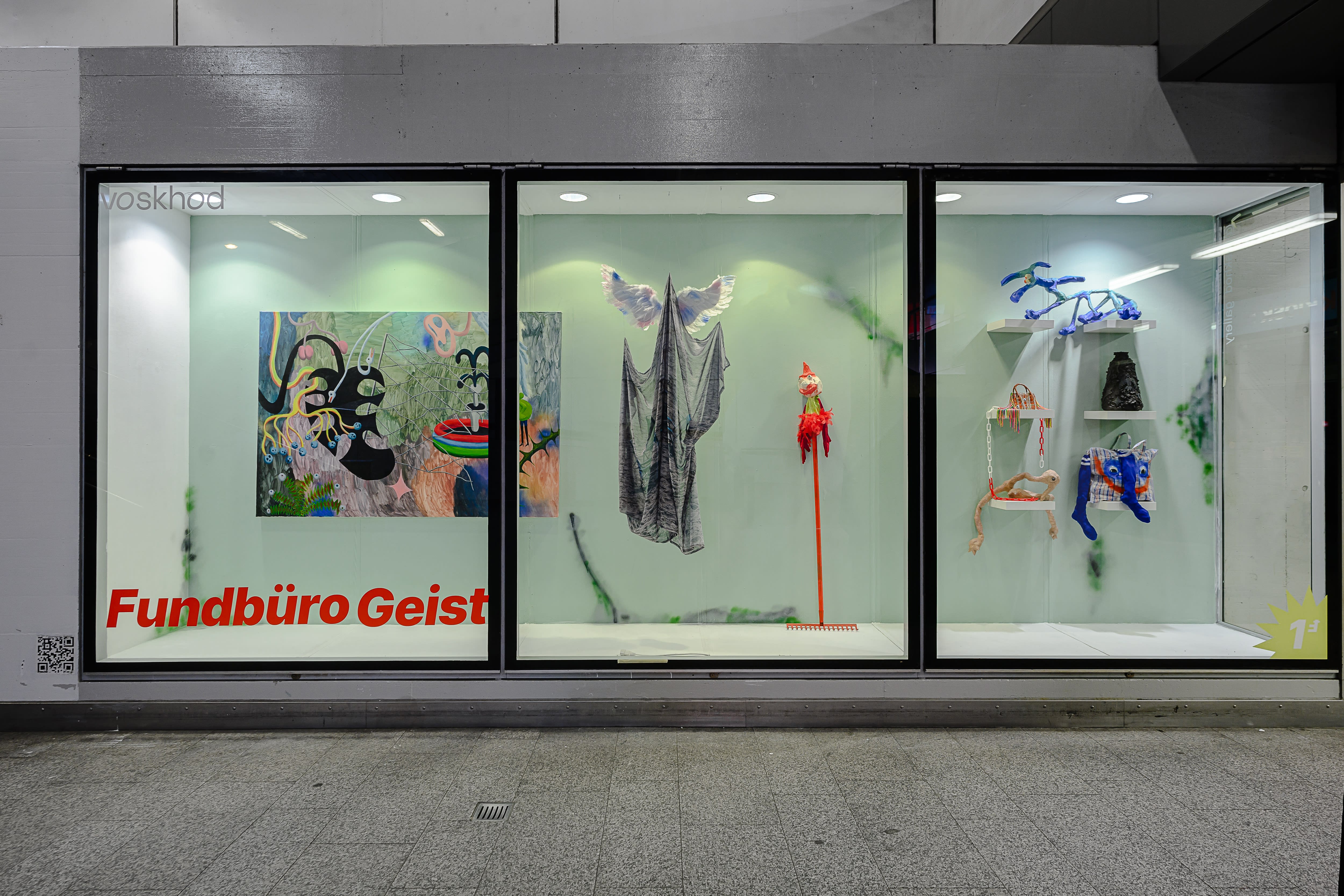
Your project explores ghostliness not only as a metaphor but also as a way of existing in the world. What role does the “ghost” play in your work?
Ghostliness, in this project, is both a metaphor for derealization — when life feels like a dream or your past seems unreal — and a reflection of miscommunication. It’s like in movies, where ghosts try to interact with the living by moving objects or using mediums.
Surrealist imagery and symbolism often feature in your work. How do visual symbols and surreal elements function as narrative tools for you?
When I try to capture ephemeral experiences, I visualize them as allegories, imagining the attributes these phenomena might have. For instance, an allegory for migration could be layers of clothing for different seasons or numerous suitcases. The characters in my work often resemble those from sci-fi films or Ghibli Studio animations. For example, the dancing teapot in Beauty and the Beast isn’t typically called surreal, but viewers of visual art tend to draw such parallels.
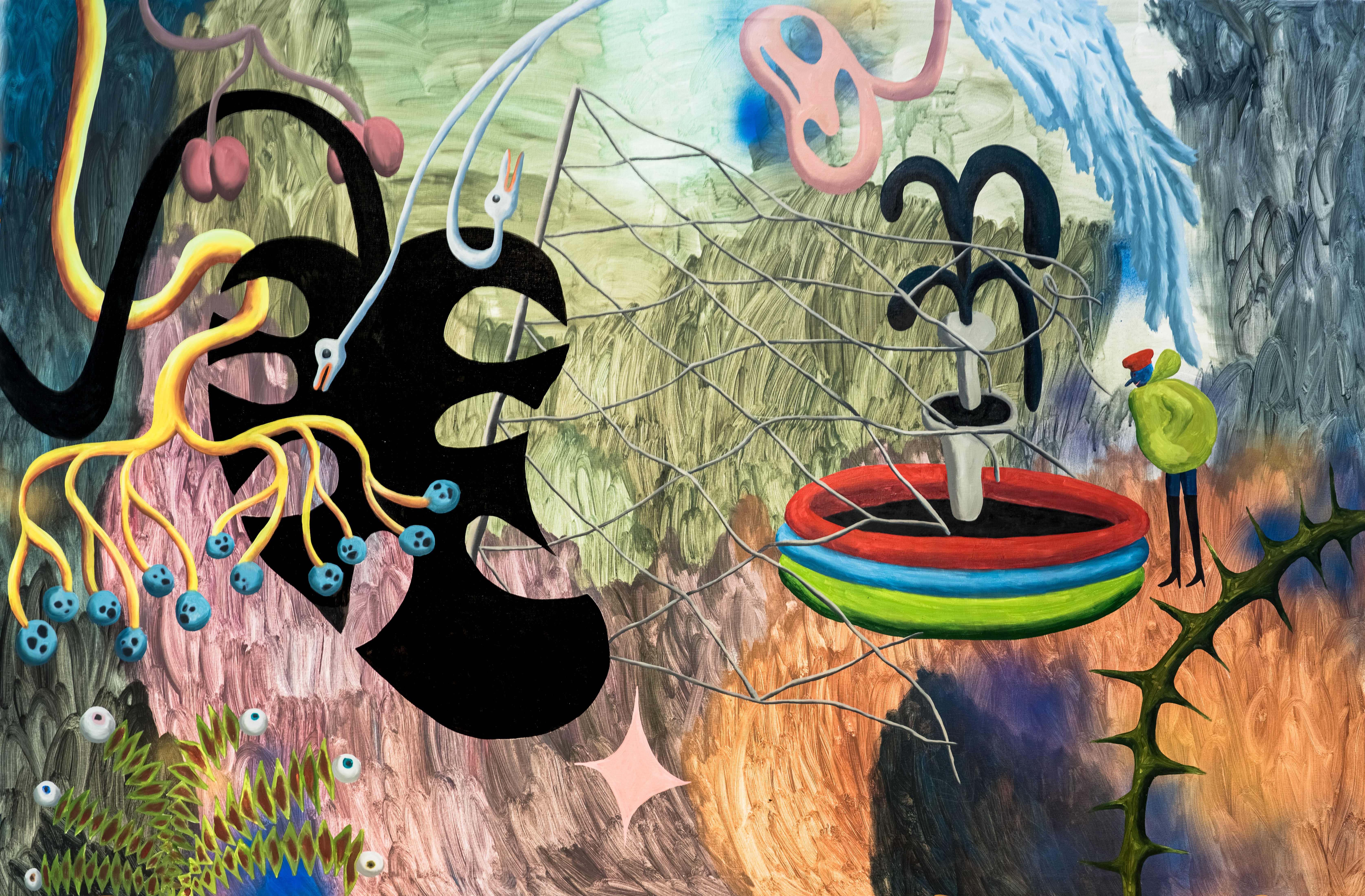
Your works combine personal expression with fictional elements. Are there autobiographical aspects in your projects?
The only character I can confidently call autobiographical is my dog, Frutzy. He appears in various paintings and serves as a model for all the dogs in my work.
Material experimentation is central to your practice. Have you previously worked with ceramics or ready-mades, and are there any new materials you’re currently excited to explore?
I love experimenting with new materials. My favorite discovery has been silicone. By mixing it in different colors, I’ve been able to expand my palette. I also enjoy its skin-like texture and hope to continue exploring its potential.
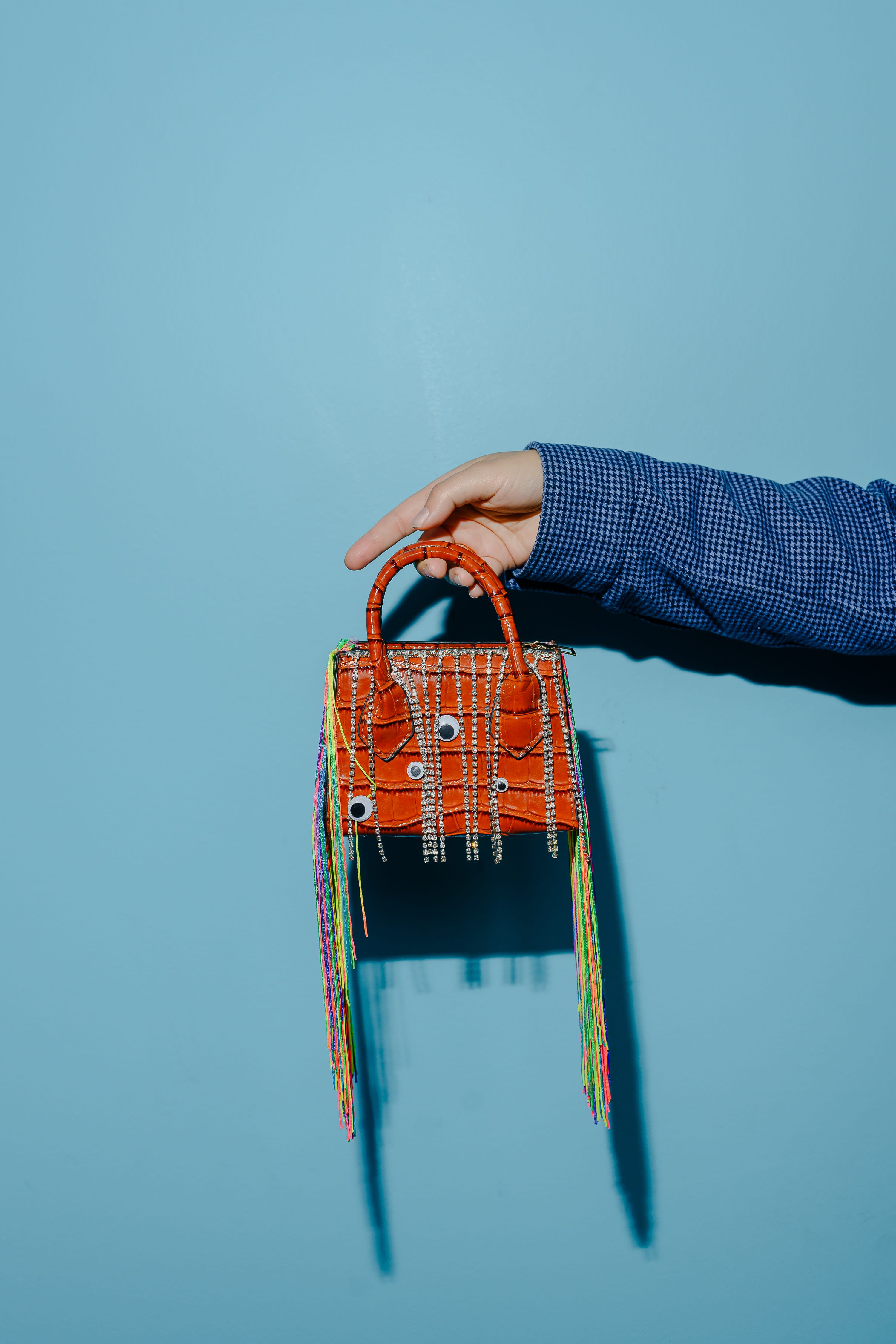
What role does audience interaction play in your creative process, and how do you incorporate it into your work?
I love how children intuitively engage with objects. A few months before the exhibition, I hosted an open studio day. A family with a seven-year-old boy came, and he immediately spotted a rake leaning against the wall. He stepped on it, catching the handle just before it could hit him. It was spontaneous and delightful.
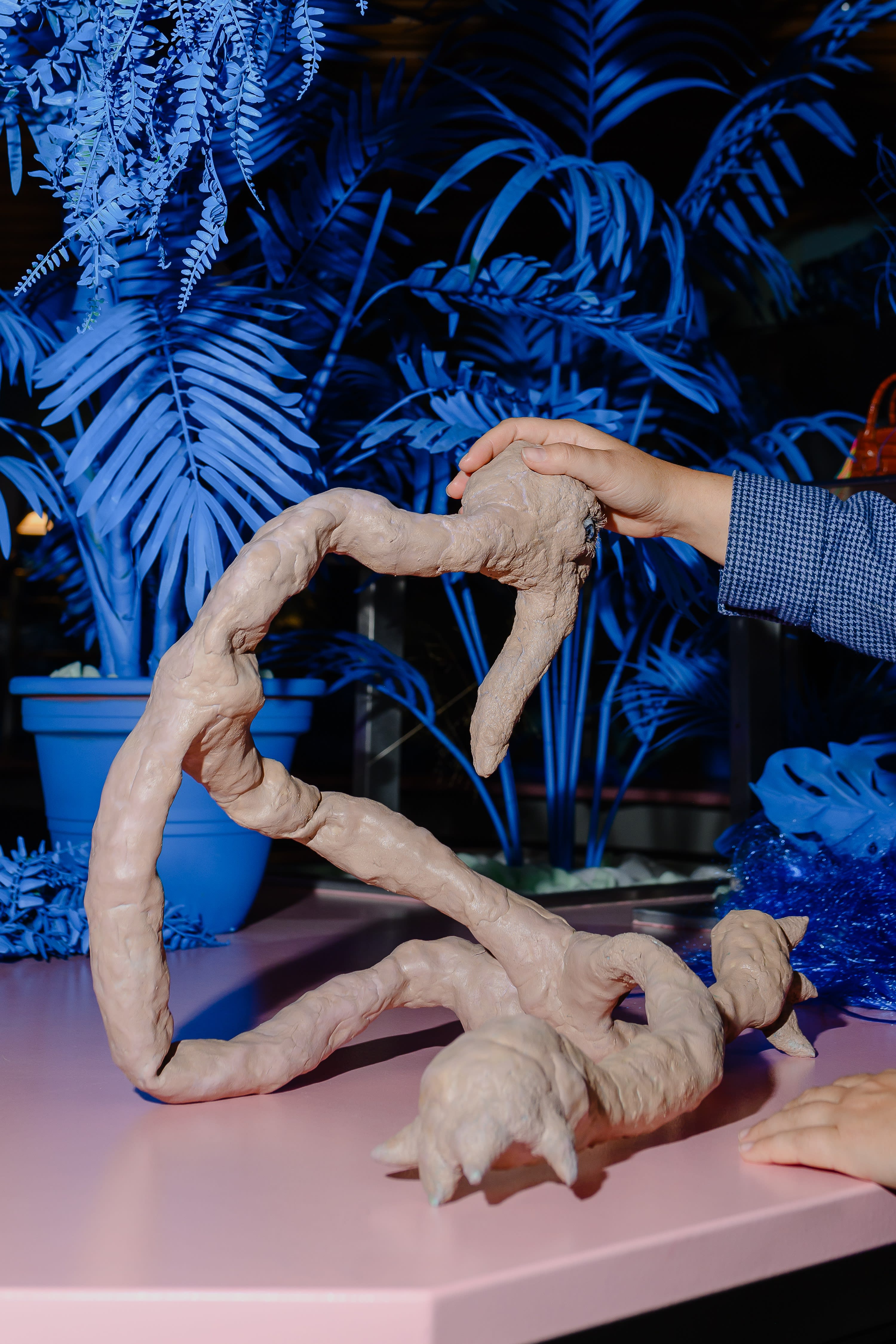
You’ve described this exhibition as a reflection of your experience as a “nomad.” What message or emotions do you hope the audience will take away from this metaphor?
The main difference between a traveler and an emigrant, in my view, is that a traveler is an active explorer, while an emigrant often feels lost. The term “nomad” feels more neutral and encompassing.
Looking ahead, what themes or ideas do you want to delve into in future projects? Are there any creative dreams or goals you’re particularly eager to pursue?
One dream I have is to participate in the boat parade in Kotor. Every August, decorated boats are paraded in this Balkan festival, which I see as a kind of local Burning Man. I hope to find a boat and decorate it — it’s an exciting challenge.
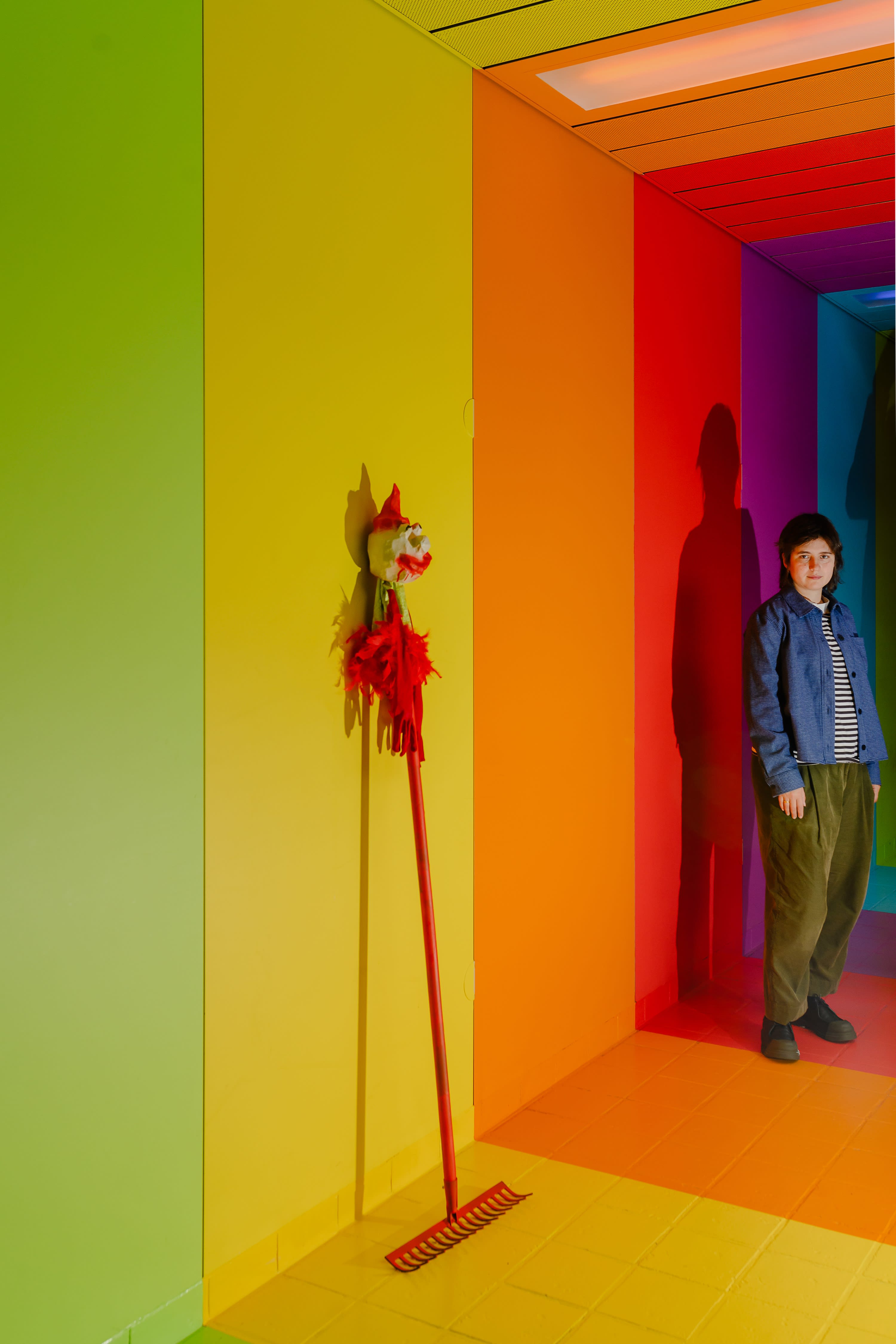
* St. Petersburg Stieglitz Academy of Arts and Industry
Photo by Anna Denisova
